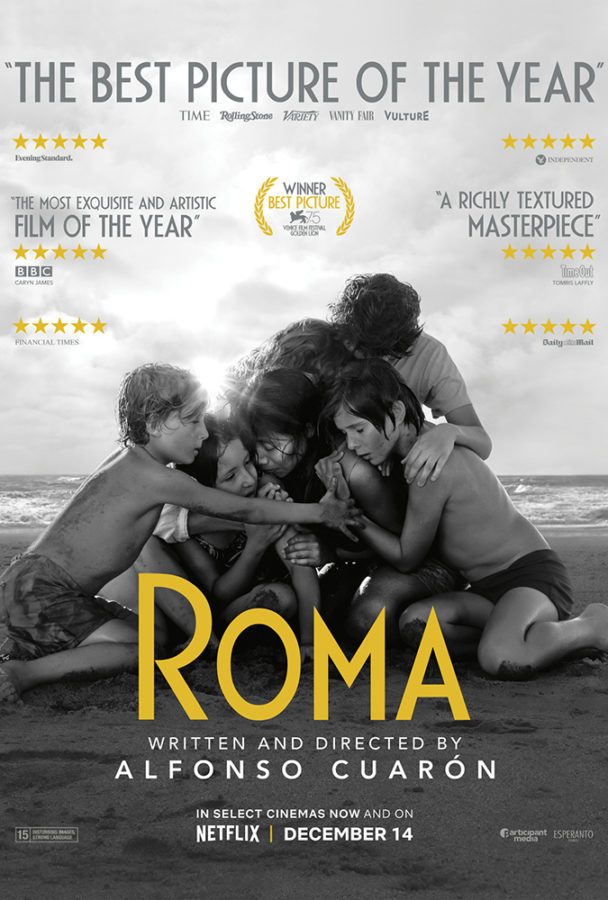Alfonso Cuarón’s latest is a black-and-white, Spanish-language cinematic treasure, inspired by events of his childhood growing up in Mexico City in the early 1970s.
The film follows Cleo (newcomer Yalitza Aparicio), a quiet, yet tender domestic worker for an active and energetic family composed of father Antonio, mother Sofía (Marina de Tavira), grandmother Teresa, and four kids, Toño, Paco, Sofi and Pepe.
(Trailer courtesy of Netflix’s Youtube channel.)
“Roma” was recently nominated for 10 Academy Awards, including Best Picture, Best Foreign Film, Best Director, Cinematography and Original Screenplay for Alfonso Cuarón, and Best Actress for Yalitza Aparicio and Supporting Actress for Marina de Tavira.
While this isn’t Cuarón’s first go at the Oscars, this marks Netflix’s first nomination for Best Picture.
Rather than following a hard-set plot, the film almost feels like an invitation to watch some of Cuarón’s most vivid memories, set over the span of a few months of his childhood.
Set in a tumultuous time in Mexico’s history, Cleo and the family also go through hardships of their own. Through it all, love exudes from this film in every way: from Cleo and her relationship with the family she works for, to Sofía trying to keep her family together amidst difficulties, to Cuarón, who depicts the events that transpire in such a gentle and loving way.
After all, Roma spelled backwards is “amor”, Spanish for love.
Making the film in black-and-white was an intentional decision for Cuarón, who also wrote and shot the film himself. Acting as cinematographer, Cuarón’s achievement with lights, darks and an array of greys is stunning.
The way each shot is composed says so much about the visual world Cuarón tries to achieve: He weaves meticulous details in each scene and shot. Whether it’s a close up or a tracking shot, each is incredibly full of life, telling the story visually rather than with a heavy set of dialogue.
The film also contains beautiful, and sometimes heartbreaking, juxtapositions, stylized visually with almost theatre-like staging techniques, bringing everyone to the forefront. A scene that features Cleo looking at newborns in the maternity wing at the hospital is paired with an earthquake that scares everyone to their core. Another scene depicts the family receiving bad news about their father, after which they quietly sit outside a restaurant while a couple of newlyweds get their wedding pictures taken.
These details are just some of the ways Cuarón tells a beautiful story within a simple backdrop, and shows us how resilient his characters are in a world where life goes on around them.
Verdict 10/10
This film is almost indescribably beautiful. Everything is so intentional that you get sucked into the world Cuarón creates, forgetting your surroundings or the passage of time. I was forewarned that this film was slow and long, but it really didn’t feel that way upon viewing it. I can see Cuarón’s creative decisions and how important they are at telling a story ultimately about women who have to remain strong in spite of their circumstances. Yalitza Aparicio’s and Marina de Tavira’s performances are exceptional. I’d like to see this film win Best Foreign Film and have Cuarón take home his second Best Director Oscar. Although, you never know, it might also take home Best Picture. It’s definitely deserving, as this was by far one of the best films of 2018.







